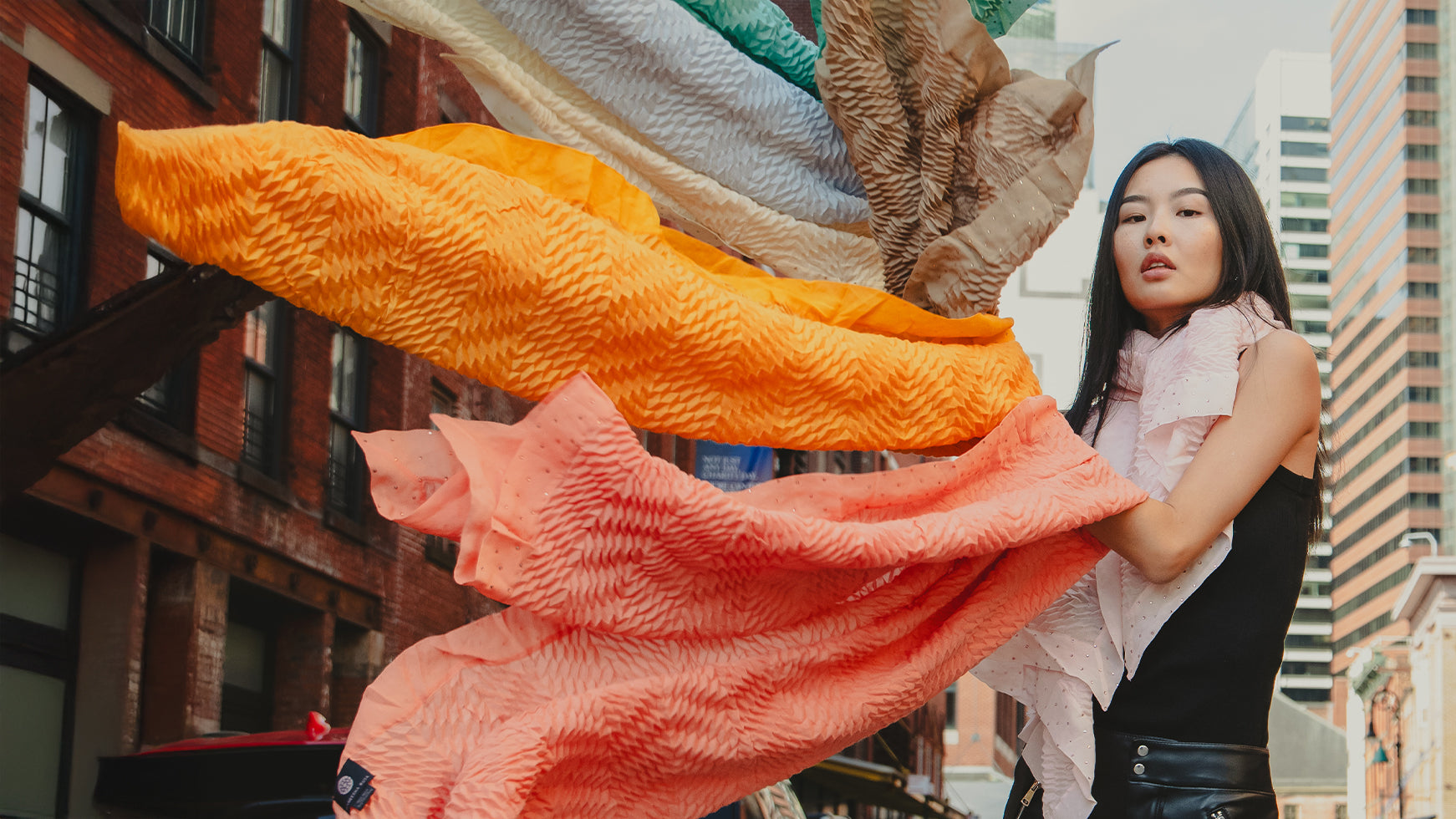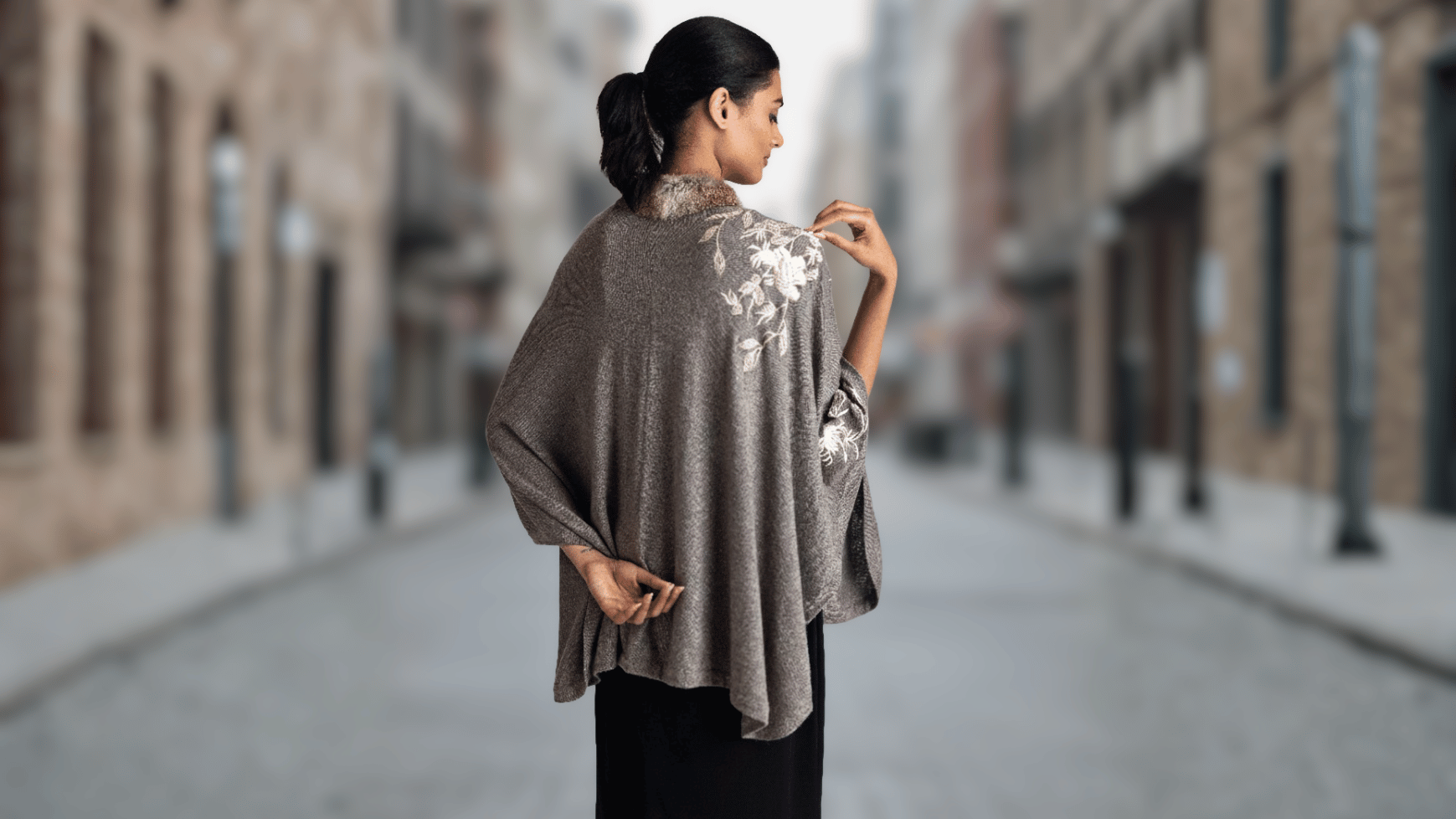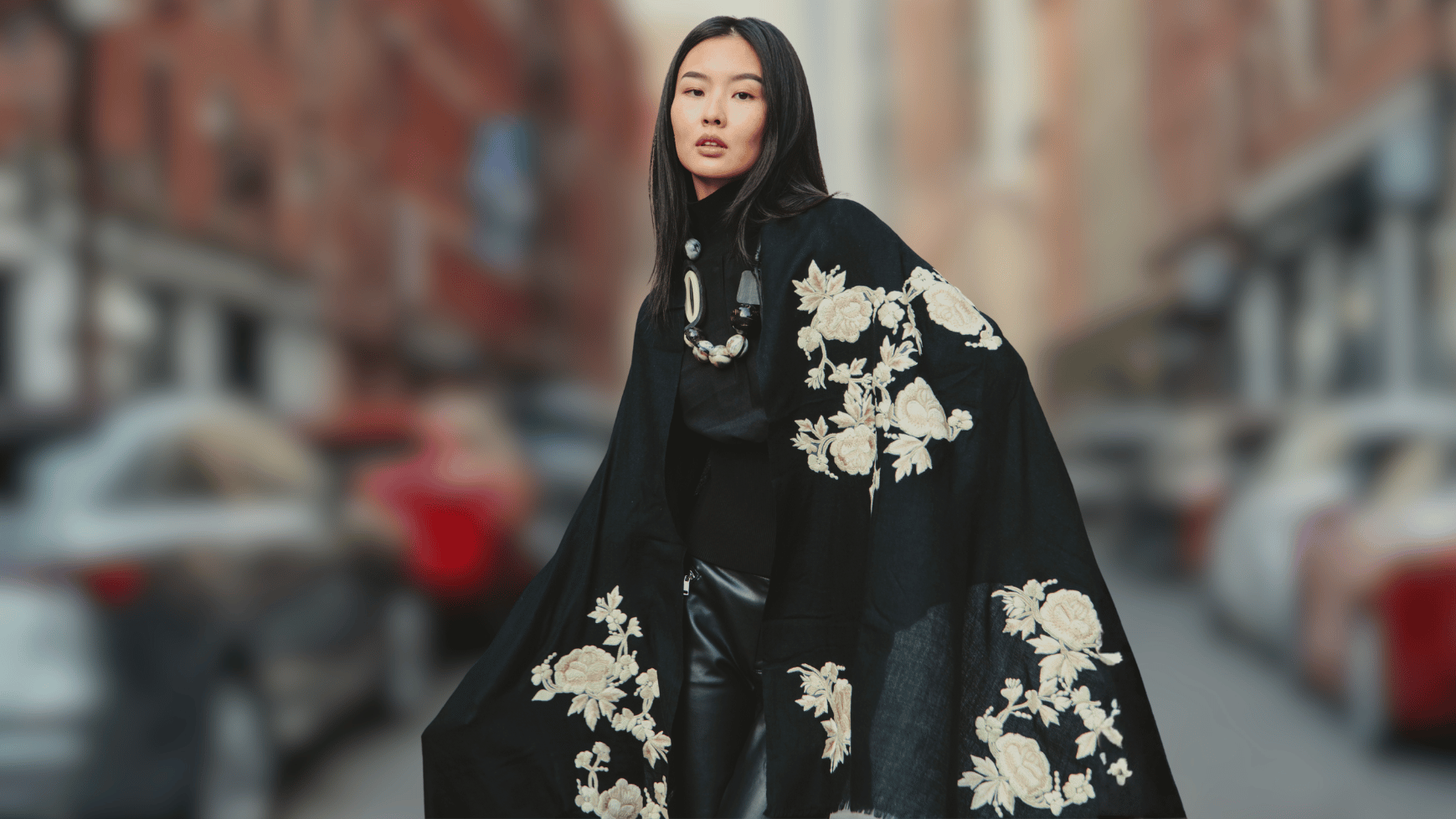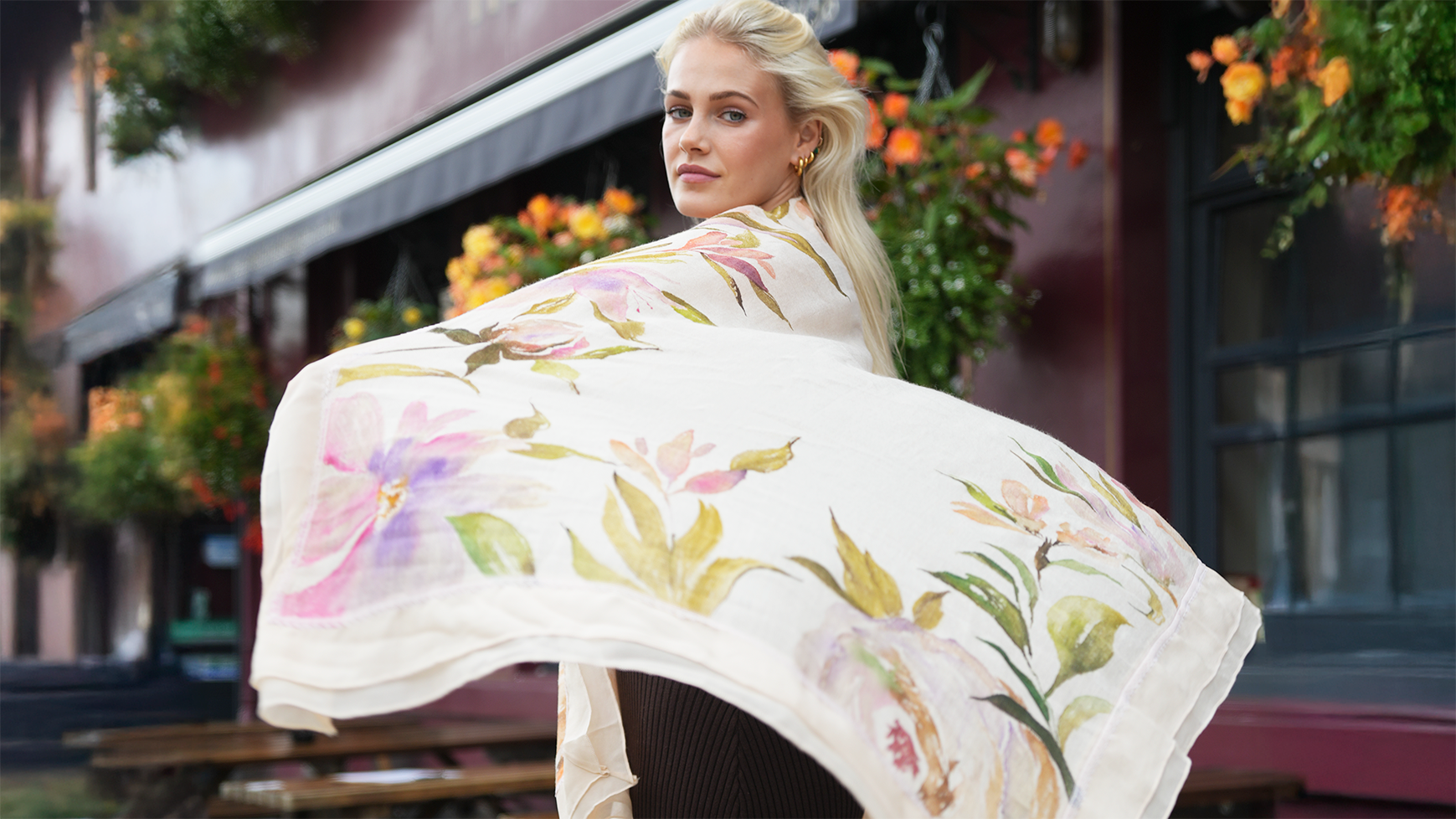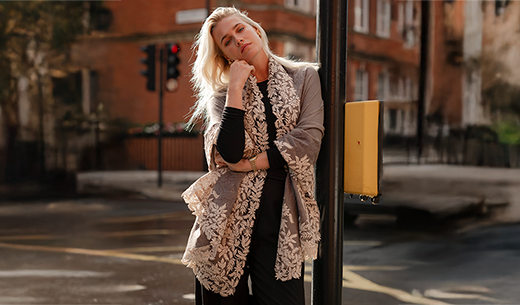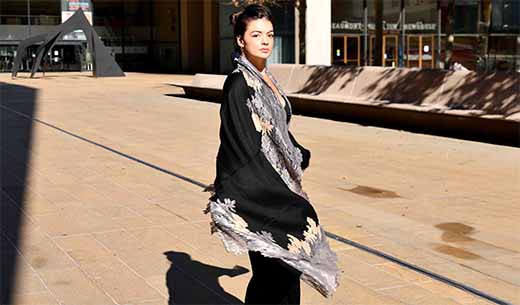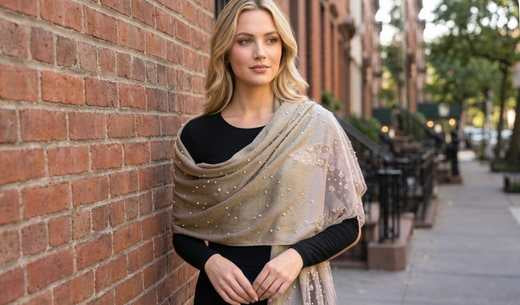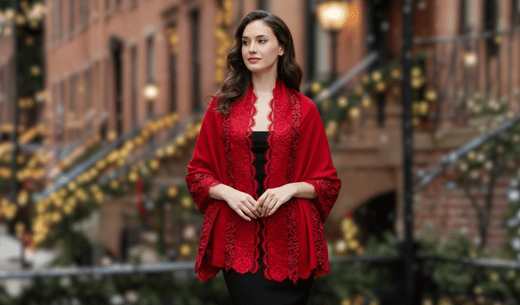The Art of Layering: Textures, Fabrics & Unexpected Pairings
Layering is the form of visual poetry when done correctly. With contrasting textures, smooth slips beneath wools, crisp lines meeting soft drapes, and unexpected pairings that read smart and elegantly designed, it's not about layering textiles but rather about conveying a story. Layering becomes a signature ability for women who frequent the city, galleries, cafes, and nightlife.
Creating layering is a craft at Maneesha Ruia. Each scarf, cape, and necklace is made to be worn alone or as a component of a textured outfit. This blog explains how to add depth to your attire by utilizing our standout items, experimenting with scales, and mixing fabrics. Here’s how to layer with purpose, from the delicate cashmere scarf for women to the knitted wool cape for women.
The Significance of Proper Layering
Wearing layers does more than just keep you warm.
-
It gives depth and texture and breaks up the flats' monotony.
-
It addresses seasonal variation, allowing for crisp mornings, warm afternoons.
-
It elevates basics: with the correct overlay, a plain dress or top can look gallery-ready.
-
Deeply narrative: The basis, accents, and final flourish each contribute afternoons, contributing a chapter. However, careless layering could result in bulk or misunderstanding. Combining scale, contrast, contribution, and intention is the key.
Anchor of the Foundation: The Knit Cape
Start by creating a structure that can be layered on top of or underneath. You can do this with our Charcoal Melange Knitted Fine Wool Cape with Lt Grey Flower Embroidery & Black Fur Collar. Although the fabric of this cape is delicate and sculptural, it offers a voluminous silhouette. A built-in contrast is created by the delicate flower embroidery and the melange charcoal. In contrast, the black fur collar provides movement and comfort. 
How to Wear it Layered:
-
Over a smooth slip dress: Open the cape to see the flowing fabric underneath.
-
When wearing a slim skirt and top, add structure by wearing a belt over or underneath the cape’s draping.
-
As a top layer over a t-shirt and jeans, keep the layers underneath simple because the cape becomes the focal point when the bottoms are sleek.
The cape, which is elaborately woven, textured, and architectural, is your outer shell. Everything else surrounds or builds upon it.
The Cashmere Embellished Scarf is a Soft, Signature Scarf
The key to layering is a well-known designer scarf. Take, for example, our Black Cashmere Scarf, which in some style has taupe lotus leaf appliqués flowing from both ends. This black cashmere scarf creates a contrast between the lighter appliqué details and the dark background. It is ideal as a touchstone in any layered outfit because it is both opulent and grounded.
Wearing options for the scape include:
-
Letting it Peep Out: Drape the scarf such that one end protrudes from behind the cape’s opening, creating a striking contrast.
-
Wrap and Tuck: To ensure that the appliqués fall asymmetrically across the front of the cape, wrap loosely once around the neck.
-
Belt Trick: To secure the scarf and cape together, bring the ends of the scarf forward and thread them through a belt.
The appliqués' glitter adds interest without drawing undue attention to itself. The goal of layering is to achieve such a balance.
The Adaptable Neutral: A Statement in Taupe Cashmere
We have a sophisticated item: a cashmere scarf in taupe with borders embroidered with ivory pearls. That muted tone creates a bridge between rich autumnal layers and lighter accents rather than competing with them.
-
This Taupe scarf is essential to complete your capsule because it can be worn underneath the cape when you want elegance without the black contrast.
-
On days when you want a little warmth, use it over a silk or linen dress.
-
As a color softener: By providing a mid-tone buffer, it subdues pairing with high contrast. Neutrals frequently perform the unseen labor in layering; they eliminate color conflict and allow texture and shape to take center stage.
The Last Touch: A Handmade Necklace
A feature that pulls the eye upward is always necessary for a wonderfully layered design. Here is our Gold Resin Braided Cord Pendant Necklace, a sculpture consisting of a black cord braid and a square resin pendant.
How to layer it:
-
Over the Scarf: To make the pendant the main attraction, place it on top of the scarf’s fold or knot.
-
Below the Neckline: Let the pendant show through if the inner layer has a V-neck.
-
Texture Contrast: The softness of cashmere and wool is contrasted with a resin and braids, adding the tasteful dash of contemporary edge.
In order to complement the flowing textile underneath, this necklace uses geometry and minimalism. It completes the layering story and is more than just an adornment.
Usual combination of minimalism. Combination & Contrast in Fabrics!
Combining different textiles and textures is one of the most fascinating parts of layering.
Some concepts:
-
Cashmere+ Lace+Linen: A cashmere scarf layered beneath a wool cape over a silk slip with lace trim strikes a balance between structure and elegance.
-
Wool Cape+ Denim Skirt+ Silk Camisole: The black cashmere scarf adds contrast to the outfit, while the cape rests over the denim and the silk slides underneath.
-
Knits+ Metallics: To add brilliant touches to otherwise matte fabrics, wear a gold-toned or resin pendant necklace.
-
Earthy Tone+Deep Black: Warm tones like caramel and taupe are anchored by the black cashmere scarf, which allows them to breathe.
The goal is to have a conversation, not to match. Allow the contrast, reverberation, and refinement of texture, colors, and ornamentation
Creating a Layered Appearance: One Step at a Time
Here is a methodical approach that you can use:
-
Begin with your foundational layer. A lightweight knit or a shirt made of silk or linen.
-
Present a distinctive scarf. Choose the one you want people to see.
-
Include the layer in between dresses, skirts, or pants that accentuate your volume.
-
Put your outer clothing on top. The silhouette is defined by the jacket or cape.
-
Use your accessories wisely. Keep the scarf and cape in the center and add your pendant necklace or plain earrings.
-
Always keep proportion in mind; defined mind; your inner layers should be elegant if your outer layer is a cape. Your layers may experiment with volume if the cape is lean.
Maintenance and Durability of Layered Textiles
Luxury fabric layering requires attention to detail:
-
Rotate Scarves: Allow fabrics to rest by not wearing the same cashmere or embroidered scarf every day.
-
Gentle Cleaning: Spot-clean silk and dry-clean wool and delicate cashmere.
-
The Store Flat: To avoid shape direction, don't hang bulky scarves or capes.
-
Steer Clear of Sharp Objects: Fine needlework or lace might become caught in bag chains or buckles.
Your layered outfits mature elegantly with deliberate wear and care, reflecting the classic nature of each item.
FAQs
-
Is it possible to wear a statement scarf underneath a cape without overpowering the outfit?
Yes, provided that the color of your cape is neutral or tonal. Keep the cape as a frame and let the scarf serve as the visual focal point.
-
Is it acceptable to wear the necklace over a scarf or heavy layers?
When a designer necklace, such as a resin pendant, has space to shine, it looks its best. Make sure it sits on the top of the outside fold.
-
When layered, would the fabrics clash or add bulk?
Select fabrics with varying weights (wool, cashmere, silk), and group lower friction materials (wool next to silk). Bulk is decreased by that harmony of layering.
-
What is the ideal number of scarves to wear at once?
Usually, one signature scarf is plenty. For texture, you can put a thin linen scarf underneath, but don't pile on too many heavy scarves at once.
-
Can I modify these layering strategies for travel or warmer climates?
Simply replace the cashmere and wool with blends of light linen or silk, and style according to the same principles of drape and contrast.
